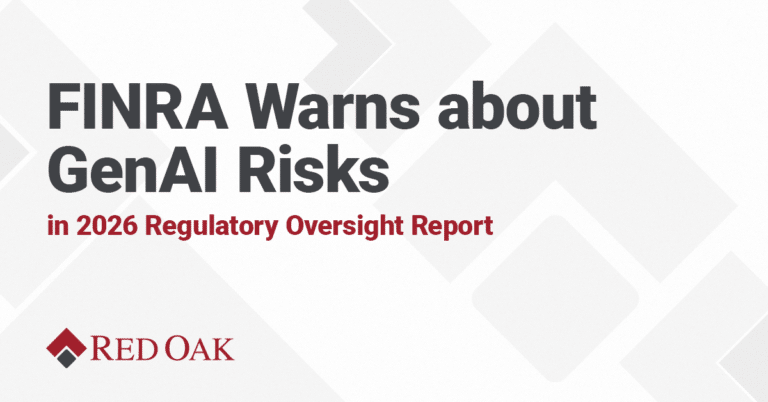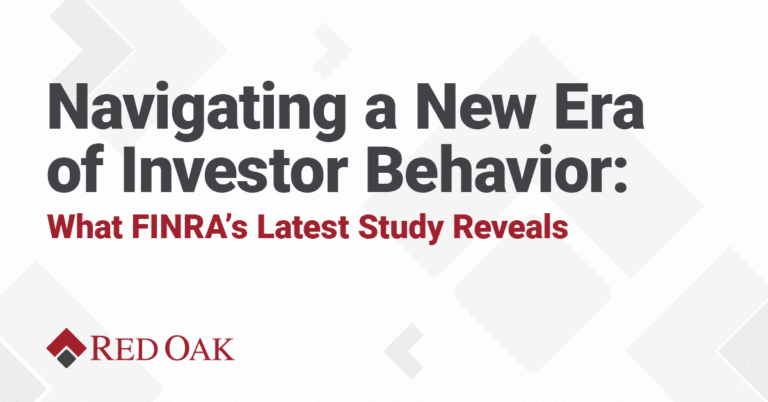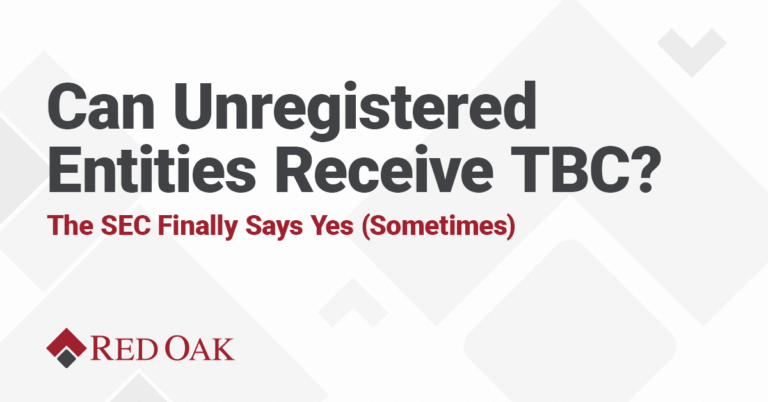Overview
Summary
The source material argues that while Artificial Intelligence (AI) can significantly enhance efficiency in financial services compliance, it will not replace human professionals, particularly in the foreseeable future. The text explains that the complexity and ambiguity inherent in financial regulation necessitate a Human-in-the-Loop (HITL) framework, where human judgment is essential for final interpretation and approval, especially in areas like advertising review. Crucially, the source identifies that human involvement is mandatory because only people can provide necessary judgment calls, interpret nuanced regulatory intent, assume accountability and liability, and manage sensitive interactions with regulators and clients. The document also presents an example of a compliance vendor that uses AI to augment human expertise while maintaining expert control over final compliance decisions.
Critical Questions Powered by Red Oak
Transcript (for the Robots)
When Will Al Replace Humans in Financial Services Compliance?
To answer this question directly: it won’t. At least not in the foreseeable future. Yet, we see a growing number of firms searching for an elusive “magic AI solution” to take the place of human oversight, especially when it comes to advertising review.
However, because of the highly regulated nature of financial services, human judgment, interpretation, and approval remain essential. Until Artificial General Intelligence (AGI) arrives—a theoretical type of AI that aims to create machines with human-like intelligence—a human-in-the-loop (HITL) framework will remain necessary to manage the nuances of compliance effectively. And even decades from now, if AGI is achieved, solid arguments (and potentially even new regulations) will remain for keeping people in the approval process.
This article explores the critical role that humans must play in compliance workflows, even as AI continues to transform the space.
What Does “Human-in-the-Loop” Mean?
The term human-in-the-loop refers to workflows where humans are actively involved in overseeing automated processes or AI systems. In compliance, HITL ensures that even when AI identifies potential issues, human experts are responsible for reviewing and approving the final output before it moves forward. This human layer is especially important in advertising review, where compliance teams use AI to flag potential risks early—but maintain the final say over what is published.
HITL balances the efficiency of automation with the judgment and accountability that today only humans can provide, ensuring that outputs meet both firm-specific requirements and regulatory expectations.
Why a Human-in-the-Loop Is Essential for Compliance
This partnership ensures that the APIs and overall roadmap of our social media compliance solution align with client needs. Our approach fosters innovation, allowing firms to have a say in the development of new functionality and features while benefiting
from the reliability and expertise that Red Oak delivers. By working closely with our clients, we create solutions that empower firms to navigate the evolving regulatory landscape confidently and effectively.
1. Judgment Calls Are Required in Ambiguous Situations
AI excels at pattern recognition and processing large data sets, but it struggles with nuance and ambiguity. Compliance, by nature, is filled with gray areas that demand subjective decisions based on context.
- What’s considered non-compliant for one firm might be acceptable for another, based on firm-specific policies and procedures.
- Compliance professionals must interpret complex rules and apply them in ways that align with their firm's unique operations.
- While AI can be fine-tuned to fit a firm’s needs, it’s not guaranteed to catch every nuance a human would notice—particularly in the early stages of adoption.
AI’s inability to fully address these subtleties underscores the need for human involvement to make judgment calls that align with both business objectives and regulatory obligations.
2. Regulations Require Interpretation, Not Just Detection
AI can identify potential compliance violations, but it cannot interpret regulatory intent. FINRA and SEC rules—such as FINRA Rule 2210 governing communications with the public—often leave room for interpretation. Compliance professionals must read between the lines to determine how these regulations apply to specific scenarios.
For example, regulators may not provide detailed, prescriptive guidance on every situation. Firms rely on compliance teams to understand these rules deeply and apply them consistently. Human expertise is necessary to interpret evolving regulatory expectations and adapt processes accordingly.
3. Accountability and Liability Remain with Humans
Even the most advanced AI cannot assume responsibility or liability for compliance outcomes. If errors occur, it is ultimately humans—not algorithms—who are held accountable.
- Compliance decisions have legal, financial, and reputational implications for firms. A mistake flagged (or missed) by AI must be validated by a person to ensure accuracy.
- Regulators expect firms to maintain robust oversight, meaning that compliance professionals must take ownership of final approvals, regardless of AI involvement.
This accountability structure ensures that human oversight remains central to compliance processes, especially when managing liability and risk.
4. Regulator and Client Interactions Require Human Insight
Compliance involves more than just adhering to rules—it requires communication, negotiation, and relationship management. Regulators expect firms to explain the rationale behind their decisions and demonstrate their compliance efforts during audits or inquiries.
- AI cannot engage in nuanced conversations with regulators to justify advertising review decisions or resolve disputes over regulatory interpretations.
- Compliance professionals play a crucial role in building trust with regulators by articulating processes, decisions, and actions.
Without a human-in-the-loop, firms risk being unable to effectively explain their compliance strategies or negotiate with regulators—a critical function in maintaining positive relationships and minimizing penalties.
Red Oak Compliance: Augmenting Compliance with Human-in-the-Loop AI
At Red Oak Compliance, we believe in the power of AI—but only when it serves as an enhancement to human expertise. Our AI Review solution helps firms streamline their advertising review processes while ensuring human oversight remains firmly in place.
- Pre-Review Efficiency: AI Review identifies potential compliance issues early, reducing review time and improving speed to market.
- Tailored Workflows: We empower clients to fine-tune the AI through prompt engineering, ensuring that the system aligns with their firm’s specific needs.
- Final Signoff by Compliance Experts: While AI helps catch issues before submission, compliance professionals maintain control over approvals, ensuring all content meet regulatory and business standards.
By combining AI with HITL processes, we help firms achieve faster, more efficient compliance reviews without compromising judgment, accountability, or quality.
Conclusion: AI Can Enhance Compliance—Not Replace It
AI offers powerful tools that can improve the efficiency of compliance processes, but it cannot—and should not—replace human oversight. Financial regulations are complex, nuanced, and open to interpretation, requiring judgment, context, and accountability that only human professionals can provide.
Firms should be wary of vendors promising AI as a magic solution capable of handling compliance autonomously. The reality is that AI can enhance workflows, but the expertise of compliance professionals remains essential to ensure decisions align with regulatory expectations and firm-specific policies.
Rather than viewing AI as a replacement, firms should leverage it to augment their compliance efforts—using it to streamline processes like advertising review while keeping humans firmly in control.



